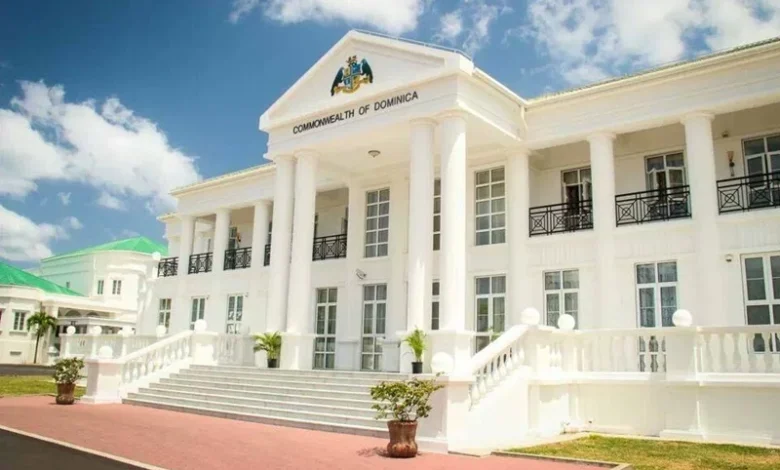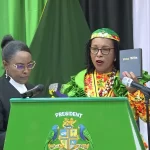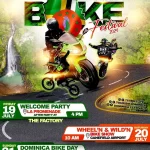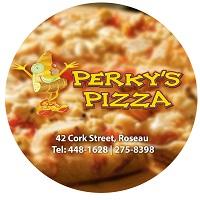Dominica’s Independence

Dominica’s Independence from Great Britain on November 3, 1978, marked a pivotal moment in the Nature Island of the Caribbean’s history, allowing the country to assert its autonomy after centuries of colonial domination by European powers. This achievement signified political freedom and the reclamation of Dominica’s unique identity. The annual celebrations of Dominica’s Independence reflect the island’s rich cultural heritage, with a blend of indigenous, African, and European influences showcased through various events. These festivities highlight the nation’s resilience and cultural diversity, commemorating the long journey to self-governance.
Historical Context of Dominica’s Independence
The island of Dominica, initially inhabited by the Kalinago, the indigenous people of Dominica, was first sighted by Europeans when Christopher Columbus sailed past the island on November 3, 1493, a date that coincidentally would become its Independence Day nearly 500 years later. Following Columbus’s arrival, the island became embroiled in conflicts between the European powers, primarily the French and the British, each vying for control. Dominica changed hands several times during the 18th century, with the British ultimately gaining complete control after the Treaty of Paris in 1763.
Throughout the 19th century, Dominica experienced significant political and social changes under British rule, including the abolition of slavery in 1834. However, complete political independence remained elusive, as Dominica, like many Caribbean colonies, was integrated into the British Empire’s political and economic systems. It was not until the 20th century, amidst a broader wave of decolonization following World War II, that Dominica began actively pursuing self-governance. In 1967, Dominica achieved Associated Statehood, which allowed the island to govern its internal affairs while remaining under British oversight for defence and foreign policy.
Finally, on November 3, 1978, after years of political efforts, Dominica became a fully sovereign state within the Commonwealth of Nations under Prime Minister Patrick John and President Sir Louis Cools-Lartigue, the island’s first president. This was a moment of immense pride and celebration as Dominica transitioned from colonial dependency to self-determination. However, the post-independence period was marked by economic challenges, natural disasters, and political instability, which culminated in a political crisis that saw the fall of Patrick John’s government in 1979.
The Importance of Independence Day Celebrations
Independence Day in Dominica is more than just a national holiday; it celebrates the island’s cultural, historical, and social identity. The festivities surrounding Dominica’s independence are deeply intertwined with the country’s rich cultural heritage, a unique blend of African, French, British, and Kalinago influences. This cultural mosaic is reflected in the music, dance, cuisine, and attire that dominate the Independence Day celebrations and the entire Independence Season, which typically lasts several weeks.
The Independence Season begins in early October and culminates on November 3rd with the official Independence Day celebrations. The festivities are marked by events celebrating Dominica’s past, its struggles for freedom, and its vibrant culture. These include Heritage Day, Jounen Kwéyòl, the National Day Parade, and the internationally renowned World Creole Music Festival (WCMF), which brings together musical artists worldwide to celebrate Dominica’s Creole roots.
Critical Events During Independence Season
1. Creole Day (Jounen Kwéyòl)
One of the highlights of Dominica’s Independence Season is Creole Day, held on the last Friday of October. This event celebrates the island’s Kwéyòl (Creole) language, music, food, and clothing. On Creole Day, Dominicans across the island don traditional outfits, including the Wob Dwiyet, a beautifully crafted, long-flowing dress made from madras cloth. The Wob Dwiyet symbolises Dominica’s cultural fusion of French and African influences. Women wear the national dress pridefully, while men wear a shirt and Chas (Sash) made of madras fabric.
In addition to the traditional dress, Creole Day celebrates Creole cuisine, with dishes like crab backs, callaloo soup, and Titiwi accras taking center stage. Music plays a pivotal role in the celebrations, with traditional Creole instruments like the Gwaj, Boom-Boom, and accordion filling the streets of Roseau and other towns.
2. Heritage Day (Jounen Hewitage)
Heritage Day is another significant event during the Independence Season. Each year, it is held in a different community and highlights its cultural and historical importance. The day typically begins with a church service, followed by exhibitions of traditional agricultural practices, craftwork, and local food. Heritage Day is also an opportunity to recognize cultural elders who have made significant contributions to their communities and to Dominica’s cultural preservation.
3. World Creole Music Festival (WCMF)
The World Creole Music Festival is a centrepiece of Dominica’s Independence celebrations. Founded in 1997, the festival promotes Dominica’s Creole culture and attracts visitors to the island during the Independence Season. Over the years, it has become one of the most important music festivals in the Caribbean. The festival features a diverse range of musical genres, including Zouk, Bouyon, Cadence-lypso, and Reggae, and it draws performers from across the Creole world, including Guadeloupe, Haiti, and Martinique.
4. National Day Parade and Cultural Gala
The National Day Parade is held on November 3rd to mark the official anniversary of Dominica’s independence. The parade features members of the Dominica Police Force, cadet corps, schools, scouts, and other uniformed groups. The President of Dominica and other government officials are in attendance, and the nation pauses to reflect on the journey to independence and honour individuals who have made significant contributions to the country.
The Cultural Gala that follows the parade is a vibrant celebration of Dominica’s traditional dances and music. Groups from across the island perform traditional dances like the Bèlè, Quadrille, and Mazouk, showcasing the island’s European and African influences. The gala is a culmination of the cultural competitions held throughout the Independence Season, with the best performers earning the opportunity to showcase their talents nationally.
Dominica’s Independence and Nation Building
Independence has brought both challenges and opportunities for Dominica. In the immediate years following independence, the island faced significant political turmoil, including overthrowing the first Prime Minister, Patrick John, in 1979. The early years of independence were also marked by economic struggles, as Dominica, like many post-colonial nations, grappled with the challenges of developing a sustainable economy amidst global economic shifts.
Despite these difficulties, Dominica has made remarkable progress. The island has developed a reputation for its commitment to sustainable development and ecotourism, leveraging its natural beauty to attract visitors worldwide. Initiatives like the National Export Strategy (NES) and the Business Gateway Project have helped promote local industries. At the same time, the Dominica Citizenship by Investment (CBI) program has provided critical funding for infrastructure and development projects.
In addition to economic development, Dominica has remained steadfast in its efforts to preserve its cultural heritage. The Kalinago Territory, home to the island’s indigenous Kalinago people, has been at the forefront of efforts to protect and promote indigenous culture. Programs focused on preserving the Kalinago language, crafts, and traditions have become integral to Dominica’s broader efforts to celebrate its multicultural heritage.
Dominica’s Independence Day celebrations commemorate political freedom and profoundly express the island’s cultural identity. From the colourful displays of traditional clothing on Creole Day to the pulsating rhythms of the World Creole Music Festival, the Independence Season offers Dominicans and visitors alike the chance to experience the island’s rich cultural tapestry. As Dominica continues to evolve and face new challenges in the global arena, its independence celebrations remain a vital reminder of the island’s resilience, cultural diversity, and commitment to forging its path in the world.




